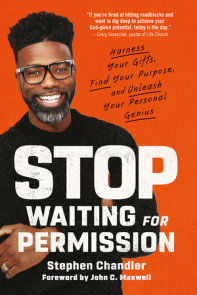READERS GUIDE
Questions and Topics for Discussion
1. Even for a scholar of antiracism like Ibram X. Kendi, the idea of talking tochildren about racism can be uncomfortable. How does Kendi come tothe realization that discussing racism could actually help preserve hisdaughter’s innocence and joy? When and why did you decide to start yourown antiracist parenting or caregiving journey?
2. Kendi says, “Raising our children to be antiracist is like dressing theirminds in armor before we send them out into the world.” Discuss two ofthese “pieces” of armor: There’s nothing right about me because of thecolor of my skin; and There’s nothing wrong with me because of the colorof my skin. Why are these important lessons to impart?
3. Why is colorblind caretaking so dangerous, even though it may seemwell-meaning? How would you differentiate antiracist caretaking fromcolorblind caretaking in a conversation with another caregiver? How willyou discuss the contradiction between race not existing biologically, butexisting societally, with children?
4. Why is it crucial to consider intersectionality? How will you explain thisconcept for the young minds you’re teaching?
5. What fact or insight surprised you most while reading the book? Whatfact are you most eager to share with others?
6. Discuss the ways that heterogeneous schools make children—all children—smarter and more successful. How can you find more heterogeneousspaces for children? How will you work to help your child build an interracialfriend group? Within those friend groups, how will you encourage yourchild to learn to be a leader and a follower?
7. How can you nurture the empathy children begin to develop at 3 yearsand 9 months? How can you encourage antiracist empathy, which, Kendiwrites, “is exuding concern, taking the perspectives, or feeling personallydistressed for the groups at the lower end of racial disparity and injustice”?Knowing that your actions serve as a model for the child’s actions, howcan you ensure that your own empathy is absolute, not conditional?
8. When your child starts waking up to racism, how can you break the cycle of“putting children back to sleep”? How can you teach school-age childrenabout the racial inequities they are already starting to notice—or that arealready affecting their lives? What age-appropriate aspects of structuralracism can you illuminate for them? How will you explain those aspectsof structural racism?
9. Kendi writes, “The most dangerous racist idea is the idea of a dangerousBlack person”—noting that racism in America causes Americans, includingand especially teachers and police, to view Black juveniles as “more similarto adults.” How can you work to combat this racist idea, in yourself andthe children you look after? What are some of the ways Kendi suggests toconvey antiracist messages about kids of color?
10. How can you facilitate open, antiracist discussions with your teenagerto protect them from racist and white supremacist messaging they canencounter online—and in real life?
11. Explain what Kendi means when he says, “To be racist is to be conceitedand insecure.”
12. The conversation starts here. The future starts here. What’s one way youwill further your child’s antiracist education in the next week? The nextmonth? The next year?






















